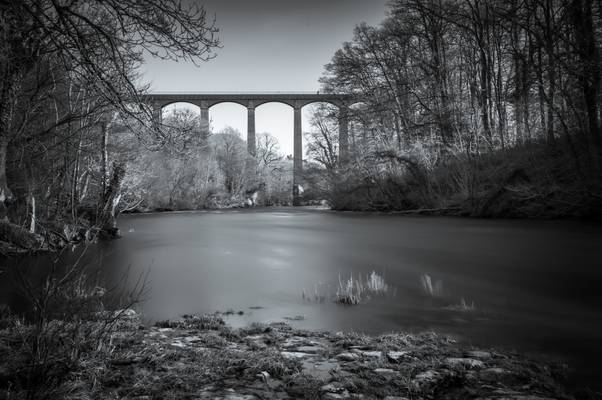
Llangollen Rural

by Alan Taylor
For the non-Welsh speaker, Pontcysyllte is pronounced ‘pont-kur-suck-tay’ and means ‘the bridge that connects’.
There are 18 piers 126ft high (38.4m) and 19 arches, each with a 45ft (13.7m) span.
To keep the aqueduct as light as possible, the slender masonry piers are partly hollow and taper at their summit.
The mortar was made of oxen blood, lime and water.
The aqueduct holds 1.5 million litres of water and takes two hours to drain.
The Pontcysyllte Aqueduct is 1,007ft (306.9m)long and spans the valley from Trefor (or Trevor) to Froncysyllte, with the River Dee running beneath it.
The work was undertaken by Thomas Telford and supervised by the more experienced canal engineer William Jessop.
The first stone was laid in July 1795. It was completed in 1805 using local stone.
At the centre, it reaches a height of 126ft (38.4m) from the river bed to the ironwork.
This is the largest aqueduct in Britain. It is fed by water from the Horseshoe Falls near Llangollen.
The water that feeds the canal runs through an iron trough that measures 11ft 10ins (3.6m) wide and 5ft 3ins (1.6m) deep.
www.wrexham.gov.uk/english/heritage/pontcysyllte_aqueduct...
Thanks to all Phoide contributors to Llangollen Rural!
Most notably Alan Taylor.